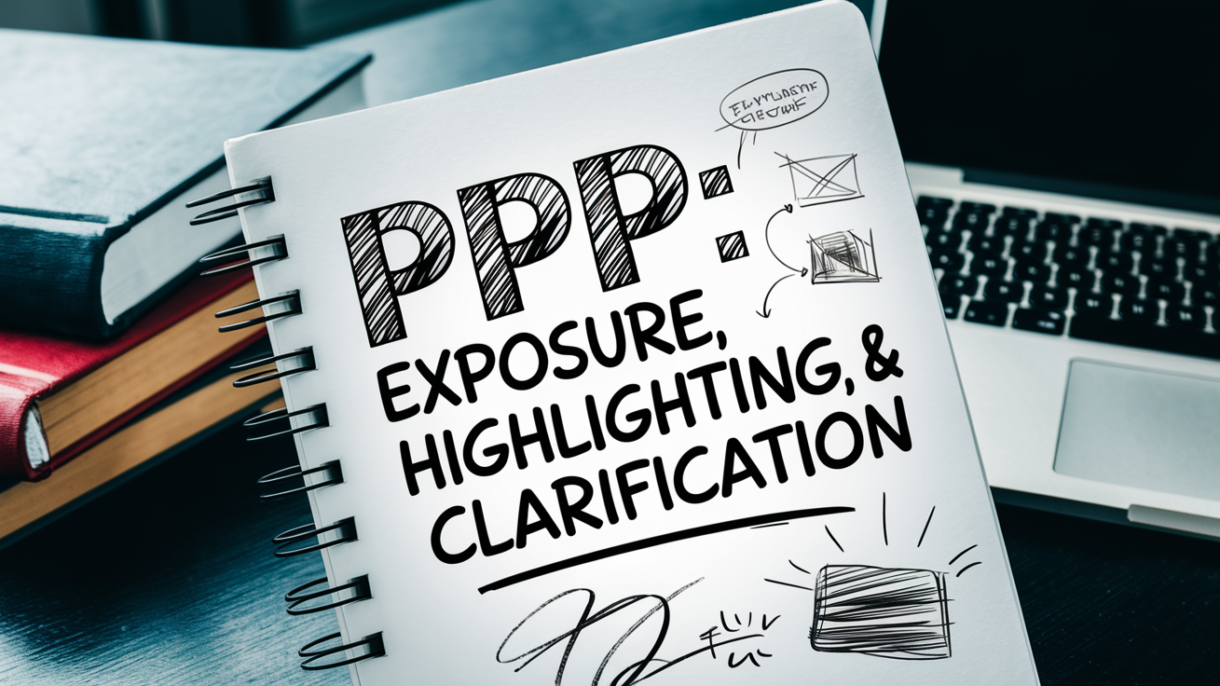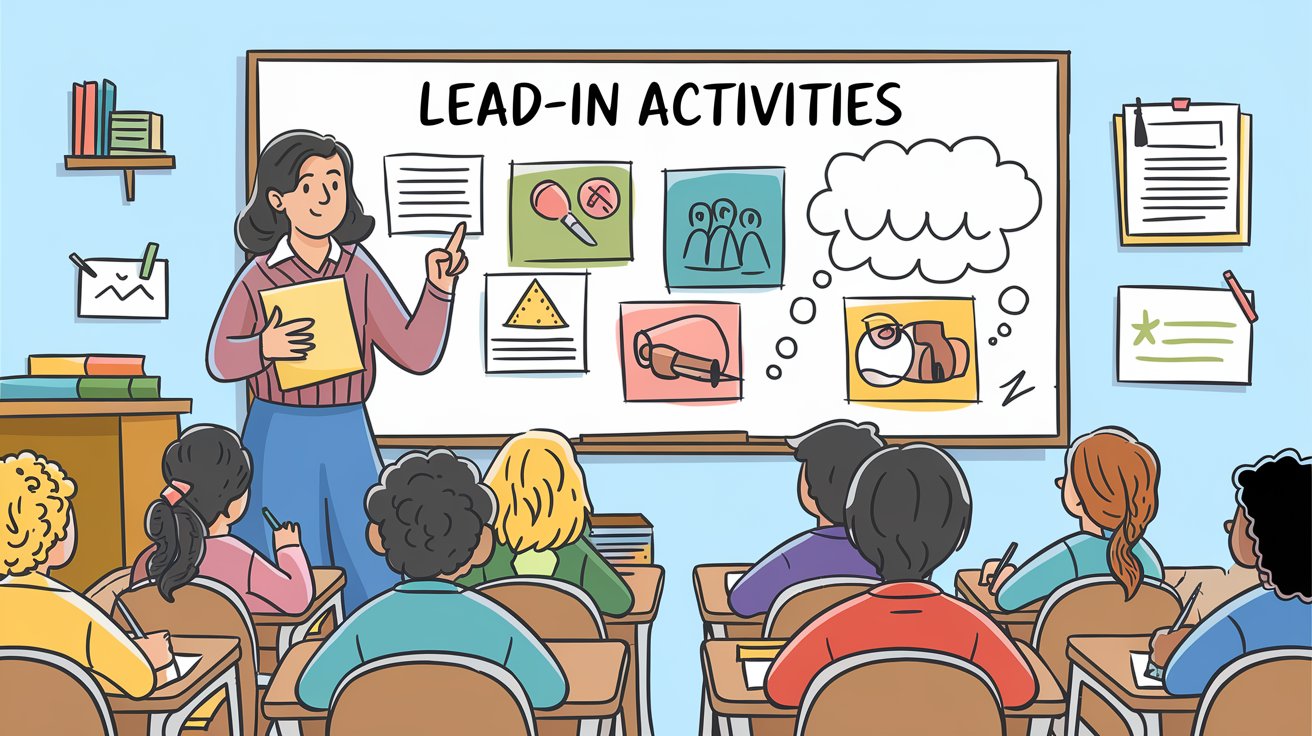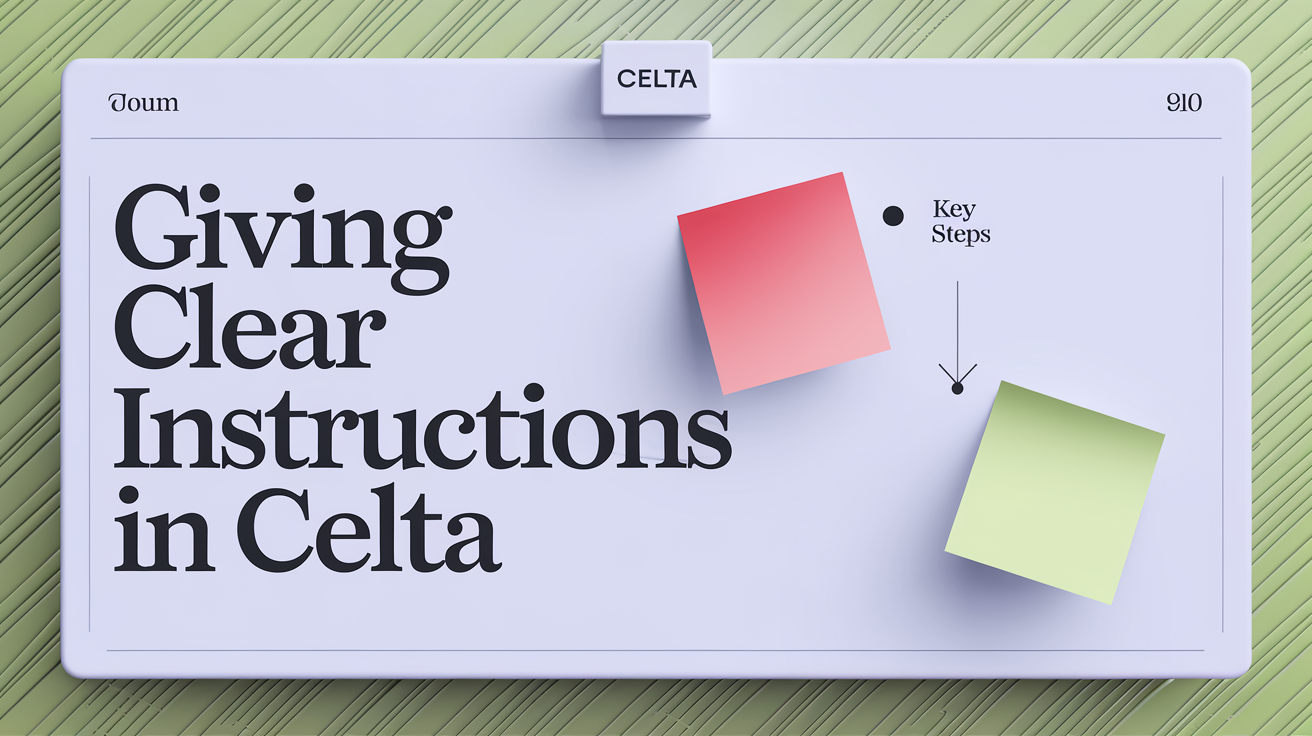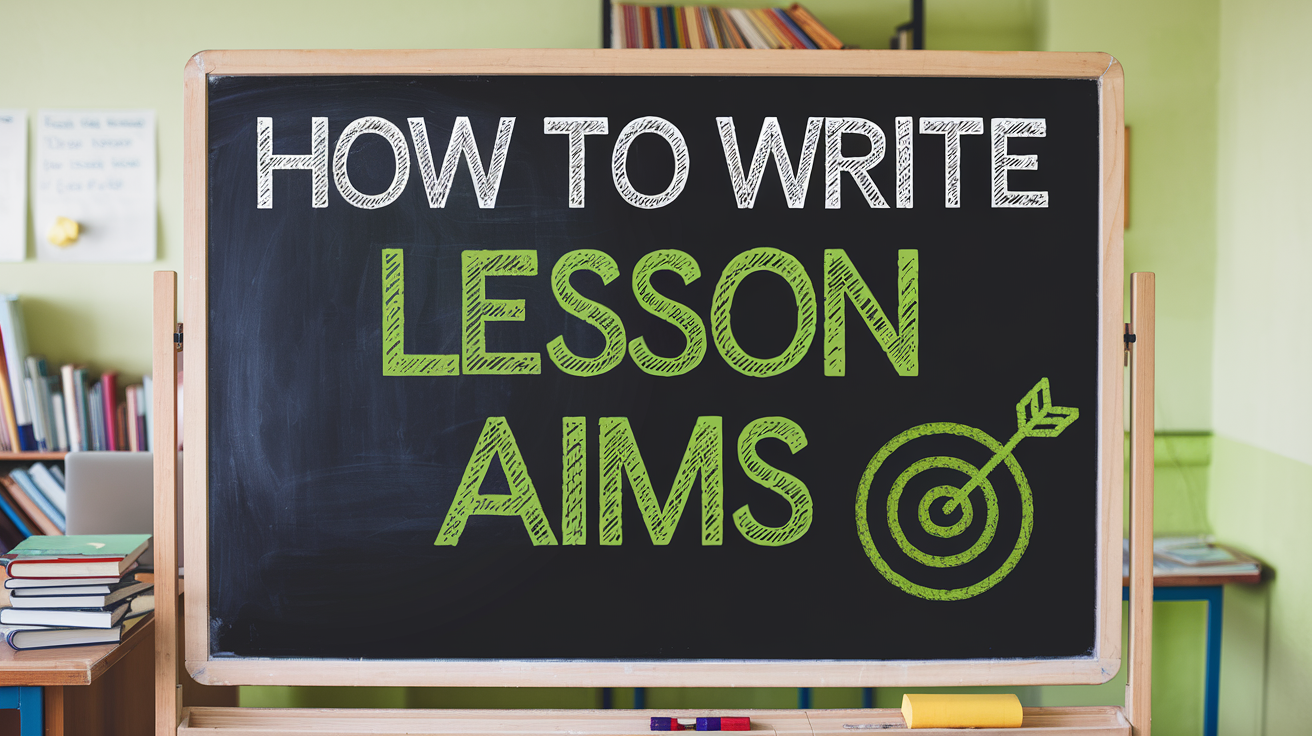
Table of Contents
Introduction
Effective lesson planning is at the heart of successful teaching during and after CELTA. Whether you’re teaching grammar or lexis, the PPP (Presentation, Practice, Production) framework is a time-tested approach that guides students from exposure to a new language to the point where they can use it confidently.
Intro to PPP
The PPP (Presentation, Practice, Production) approach is a widely-used methodology in language teaching, particularly for introducing new grammar structures or vocabulary. This three-stage framework provides a structured and systematic way to guide learners from initial exposure to a language item through to its confident use in communication. PPP is especially valuable for novice teachers and those working with beginner to intermediate-level students, as it offers a clear roadmap for lesson planning and delivery. The approach aligns with cognitive learning theories, which suggest that learners benefit from a gradual progression from controlled practice to freer language use. By following the PPP model, teachers can ensure that students receive comprehensive input, have ample opportunity for guided practice, and ultimately achieve the lesson’s linguistic objectives through meaningful production activities. It is also one of the first frameworks introduced in CELTA courses.
This article focuses only on 3 stages of the PPP framework. Differentiating these three stages is one of the most common pitfalls for my CELTA trainees. In this blog post, we’ll explore the three essential stages in a PPP lesson focused on lexis or grammar to help you optimize your teaching strategy.
The three stages should provide a clear context and clarification to ensure better understanding of the target language
Exposure: Setting the Foundation for Learning
The first stage in any PPP lesson is Exposure. This is where you introduce your students to the target language in context without demanding immediate production from them. The goal here is to immerse students in the language through a text, listening exercise, or video. This stage is crucial as it allows students to engage with the language in a natural setting.
Key to Effective Lesson Planning: Before presenting the text, video, or audio, set a comprehension task that guides students to focus on the content rather than the language itself. For example, if your lesson is on the Present Perfect tense for experience, and the context is travel, you might ask students to note down three countries mentioned in a video and two activities the speaker did in those countries. This ensures that students pay attention to the overall message, setting the stage for the next phase.
Highlighting: Drawing Attention to the Target Language
Once students have been exposed to the target language, the next step is Highlighting. This stage is all about directing students’ attention to specific examples of the target language within the text or audio they have just experienced.
Key to Effective Lesson Planning: You could ask students to find all examples of the target structure in a transcript or text, such as underlining all instances of the Present Perfect tense in a travel story. Alternatively, you could have them identify vocabulary related to the lesson’s topic. This task helps students to see the language in use, reinforcing their understanding before moving on to active use.

Clarification: Deepening Understanding Through Explanation
The final stage of these stages before providing practice is Clarification. Here, you provide students with a clear explanation of the meaning, form, and pronunciation of the target language. This is where students move from recognizing language in context to understanding its rules and patterns.
Key to Effective Lesson Planning: This stage can be either teacher-led or student-led. For example, you might walk students through the rules of the Present Perfect tense, focusing on its use for describing experiences. Alternatively, you could have students collaborate to deduce the rules themselves and then confirm their findings during feedback. The goal is to ensure that by the end of this stage, students not only recognize the target language but also understand how and when to use it.
An Example of the Three Stages
Let’s bring this to life with a practical example. Suppose your target structure is the Present Perfect for experience, and your lesson context is travel.
Exposure: Use a video or text where someone discusses the countries they have visited and what they did there. Set a comprehension task beforehand, such as noting down three countries and two activities mentioned.
Highlighting: After watching the video or reading the text, provide students with a transcript and ask them to underline all instances of the Present Perfect tense. You can provide the first instance as an example so they know what is required.
Clarification: Finally, explain the meaning, form, and pronunciation of the Present Perfect, emphasizing its use for talking about experiences. Encourage students to create their sentences using the structure.
Mastering the three stages of a PPP lesson—Exposure, Highlighting, and Clarification—is essential for effective lesson planning for CELTA and post-CELTA lessons. By carefully guiding your students through these stages, you ensure they are not only exposed to new language but also develop a deep understanding and the ability to use it confidently. Incorporate these strategies into your lesson planning to create more engaging and effective lessons that support your students’ language development.
Looking to excel in your CELTA training and become a confident, effective teacher? Enroll in the “CELTA Preparation Course” today. This comprehensive online course, designed by seasoned CELTA trainer Ahmad Zaytoun, provides you with the essential skills and strategies needed to succeed in your CELTA program.









0 Comments